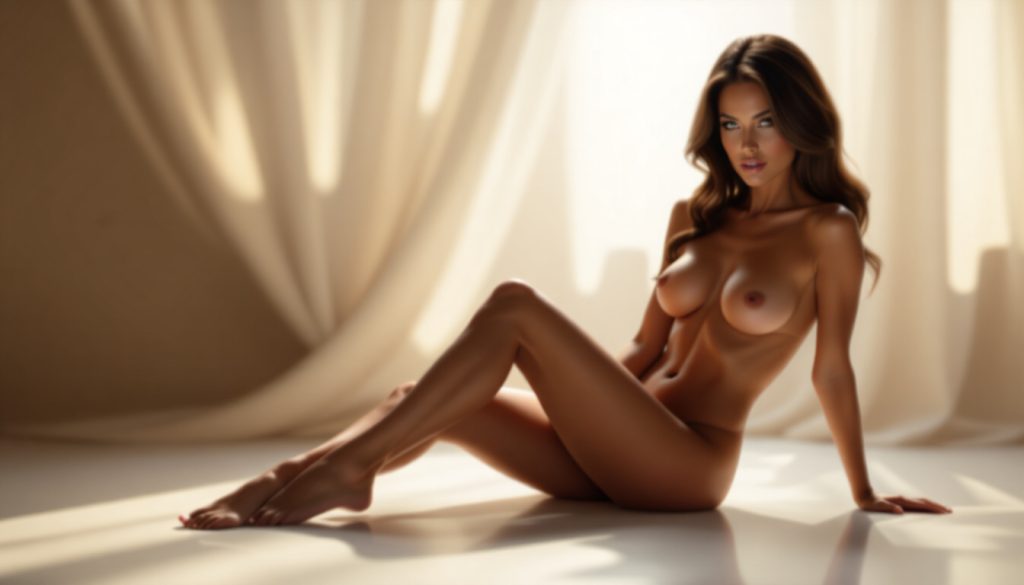Searching for AI-generated feet pictures might’ve sounded like a weird Google blip just a year ago, but not anymore. Type in “AI feet generator” today and you’ll land in a mess of Reddit threads, Discord leaks, and custom art posts — all centered around one hyper-specific, exploding category of digital kink. Whether it’s for solo use, content prompts, or book cover aesthetics, users are flocking to AI foot imagery like it’s a proxy for something deeper — control, anonymity, or pure creative indulgence. At the intersection of convenience and obsession, AI feet porn has moved from fringe curiosity to a full-blown community magnet.
Why AI Feet Pics Are Popping Up Everywhere
TikTokers are talking about it. Reddit’s foot fetish subs are sharing prompt guides. OnlyFans creators are quietly using it when their real feet need a break. What’s going on?
A few years ago, adult AI art mostly meant distorted faces and glitched erotica. But once text-to-image diffusion went mainstream, fetishes followed—and foot content skyrocketed. Why? Because feet have always carried layered meaning in sexuality, flirting with taboos but rarely crossing legal lines. AI makes it easy to build, tweak, and consume those fantasies with no physical body involved.
From polished toes resting on fantasy beaches to dirty soles deep in surreal dreamscapes, AI-generated foot content now spans three major styles:
- Photorealistic: Flesh tones, realistic wrinkles, perfect lighting — often hard to distinguish from actual images.
- Cartoonish or semi-anime: Popular in fantasy and erotica fan art circles, especially where character-specific content is modeled.
- Surreal & stylized: Abstract prompts bring odd angles, floating limbs, or foot collages — more art than porn, but still NSFW-adjacent.
This content lives on custom-generation tools (like FeetGen), locked Reddit channels, encrypted Discords, and private AI art plugins. Most creators nod toward fantasy, but discussions around legality, consent, and ethics bubble just below the surface.
The AI Behind The Curves, Arches, And Soles
What fuels this whole operation? Text-to-image diffusion models. These powerful engines take simple input — a few descriptions, a specific scene — and pull millions of data points to return an original image. Names like Stable Diffusion, DALL·E, and MidJourney hit early mainstream attention, but the niche exploded when purpose-built tools showed up.
Platforms like FeetGen and BootyFusion (yes, it exists) go even deeper. They’re trained specifically on body-part datasets. These custom models absorb mass replica patterns — poses, angles, nail styles, texture mapping — and churn out fetish-specific imagery at lightning speed.
Why it’s working so well:
- Open-source weights: Sites like Civitai let hobbyists train and share hyper-focused models. If someone’s obsessed with high arches or tanned soles in beach lighting, chances are there’s a model trained for that.
- Speed & anonymity: No need to tip a model, prep a photoshoot, or worry about oversharing. It’s all anonymous, fast, and infinitely redoable.
- Creative freedom: Want a barefoot vampire with golden toe rings walking through moon-drenched ruins? You got it in 30 seconds. Real life isn’t that generous or forgiving.
Here’s a quick comparison of the top models powering fetish content:
| Model | Strength | Fetish Use |
|---|---|---|
| Stable Diffusion (open source) | Highly customizable, scriptable | Most popular for DIY NSFW prompts |
| Midjourney | Strong aesthetic styles | More artistic, less porn-centric |
| FeetGen | Built for feet and BDSM content | Trusted in fetish Discords |
| DALL·E | Safe-mode by default | Heavily filtered, not kink-friendly |
It’s not just about tech; it’s what the tech taps into. AI foot porn isn’t replacing real imagery. It’s reshaping how private fantasies are shaped, explored, and shared. And it’s happening faster than most platforms can regulate.
How Prompts Make Or Break A Feet Fantasy
This world thrives on the right words. Crafting the perfect AI feet image has become part poetry, part coding trickery, and a whole lot of obsession.
At the heart of it all is prompt engineering — the exact wording you feed into the model. And the community has learned what works, fast.
Common prompt structure:
- “barefoot, high arches, wrinkled soles, photorealistic skin texture, French pedicure, soft lighting, close-up, 35mm close shot”
That seems harmless on the surface, but foot content lives in the nuance — a comma too many, and suddenly the toes are webbed or the arches are melting into puddles.
People also use negative prompts to filter out AI’s weirdness:
- “no extra toes, no deformed ankles, no watermarks, no distorted limbs”
It’s still not perfect. AI has always struggled with human anatomy, especially weird-shaped parts like feet and hands. Fixes like ControlNet, LoRA modules, and hypernetworks give users better control — locking in poses, smoothing out skin, correcting lighting, or even generating specific ethnic backgrounds.
The most controversial practice? Feeding AIs celebrity feet photos from open sources and training a private model on their structure. That’s not just a moral mess — it may break copyright laws, personal rights, and platform agreements in one breath.
Bottom line: Prompting for feet isn’t about typing “pretty toes.” It’s a whole genre of fetish customization, teetering between art, obscenity, and identity — all coded into a single line of text.
AI Fetish Models and Bias
The promise of AI-generated foot content is customization without compromise. No scheduling with models. No awkward conversations. Just prompts and pixels. But what happens when everyone’s feeding the machine the same beauty template over and over again?
Most AI feet generators—like FeetGen, Stable Diffusion forks, or those prompt-based Discord bots—are built from open datasets scraped from Reddit, DeviantArt, and the kinkier corners of the internet. A training diet heavy in posts tagged “#footfetish” on r/NSFW means that what gets produced is shaped by what users considered hot enough to upvote. And guess what? It’s mostly soft-lit, white-skinned, Barbie-like feet propped against mood-lit backdrops.
This creates two major problems. First, the training set mirrors and reinforces narrow norms: slim ankles, high arches, hairless toes, perfect symmetry. And second, they exclude—badly—any kind of foot that doesn’t match that ideal.
- Feet of color? Hard to find, and often distorted or washed out.
- Elderly feet or disabled limbs? Almost nonexistent or depicted unrealistically.
- Non-Western features? Rarely represented, and when generated, sometimes warped into uncanny messes.
In short, if the AI’s only seen one type of foot, it’s only going to produce one definition of “desirable”—cementing a digital kink hierarchy that wasn’t even conscious to begin with.
Even when models are fine-tuned or “cleaned up” by newer versions, the echo of bias stays baked in. What feels like innovation is often just more of the same, now automated. That’s not just boring—it’s exclusion disguised as precision. The machine learns what we tell it, and it’s been taught to fetishize youth, whiteness, and a narrow slice of idealized womanhood.
Where Consent Disappears
It’s one thing to generate general images of human feet. It’s another to generate someone’s feet. AI image tools don’t ask for permission—especially not when users upload blurry selfies or public Instagram pics to build prompts that mimic a specific person’s style, skin tone, or even tattoo placement.
That’s how we ended up with foot content modeled suspiciously close to real influencers, celebrities, or even exes. Whether done through blending tools or custom training sets, the line between inspired and invasive blurs fast—worse when someone’s likeness is used without them ever knowing.
And here’s the loophole. On paper, most platforms ban explicit porn or NSFW visualizations. But feet? Technically not genitals. And that’s why feet porn dodges those bans on Twitter, Discord, Hugging Face, and other open source AI sites.
Some users take advantage of this gray area—using prompt tricks to generate overtly fetishistic, sexualized images that tiptoe around the rules. Instead of “nude” or “porn,” they use coded phrases like “bare soles in moonlight” or “close-up sensual arches with soft wetness.” Add the right lighting, zoom, and edits? Suddenly you’ve got content that feels pornographic without ever saying the word.
Safety filters exist. Sure. But they’re laughably easy to bypass. Prompt engineers swap in alternate terms, use “/blend” functions, or stack images until the filters wave a white flag. It’s a digital arms race—with AI models improving while users outwit them one inappropriate step at a time.
The core issue is that consent isn’t baked into the rendering process. A model doesn’t care who its results resemble, unless we teach it to. And legally? We’re in unclaimed land. U.S. courts haven’t decided whether AI-made fetish material counts as protected speech, personal likeness infringement, or something in between. Until that happens, creators, victims, and platforms are mostly winging it, blindfolded.
What happens when a celebrity finds their toes front and center on an AI foot subreddit—generated by a fan who “only used public info”? Nothing. Not yet, anyway. But boundaries around this are breaking every day, and consent is usually the first thing to get lost in the shuffle.
From NSFW Corners to BookTok Covers
AI-generated feet aren’t just staying on Reddit or private kink servers. They’re slipping into mainstream feeds, selling romance novels, spicing up OnlyFans headers, and even showing up on e-commerce skin care mockups.
BookTok? Oh yeah, it’s covered. Take a stroll through dark romance or indie erotica thumbnails on Amazon and you’ll spot a pattern: wet pavement, barefoot girls running in slow-mo, cropped toes framed by suggestive shadows. Those aren’t random stock images. Many are made with AI feet models—chosen for expressive mood, anonymity, and just enough plausible deniability to beat TikTok’s strict cover checks.
OnlyFans creators are tapping in too. Why take 50 DIY foot pics when the algorithm can render the perfect “goddess pose on gold velvet” in seconds? It’s not about deception; it’s about marketing with flavor, variety, and flair. One creator even said, “My AI foot art page brings in more subs than my real feet ever did because I can go fantasy with it.”
Indie authors are in on it. Especially ones writing taboo or high-heat fiction. Using AI feet images gives them an edgy but legal way to hint at kink without triggering sales bans. Think: “pregnant vampire feet in blood puddle” or “barefoot on broken glass after heartbreak.” It’s weird, yes. But in a market where covers are everything, originality sells.
So yeah, what started in the shadows is walking barefoot into mainstream lanes—sometimes literally. Feet made by algorithms, packaged as art, sold as desire. It’s surreal, convenient, and just problematic enough to stay viral.








